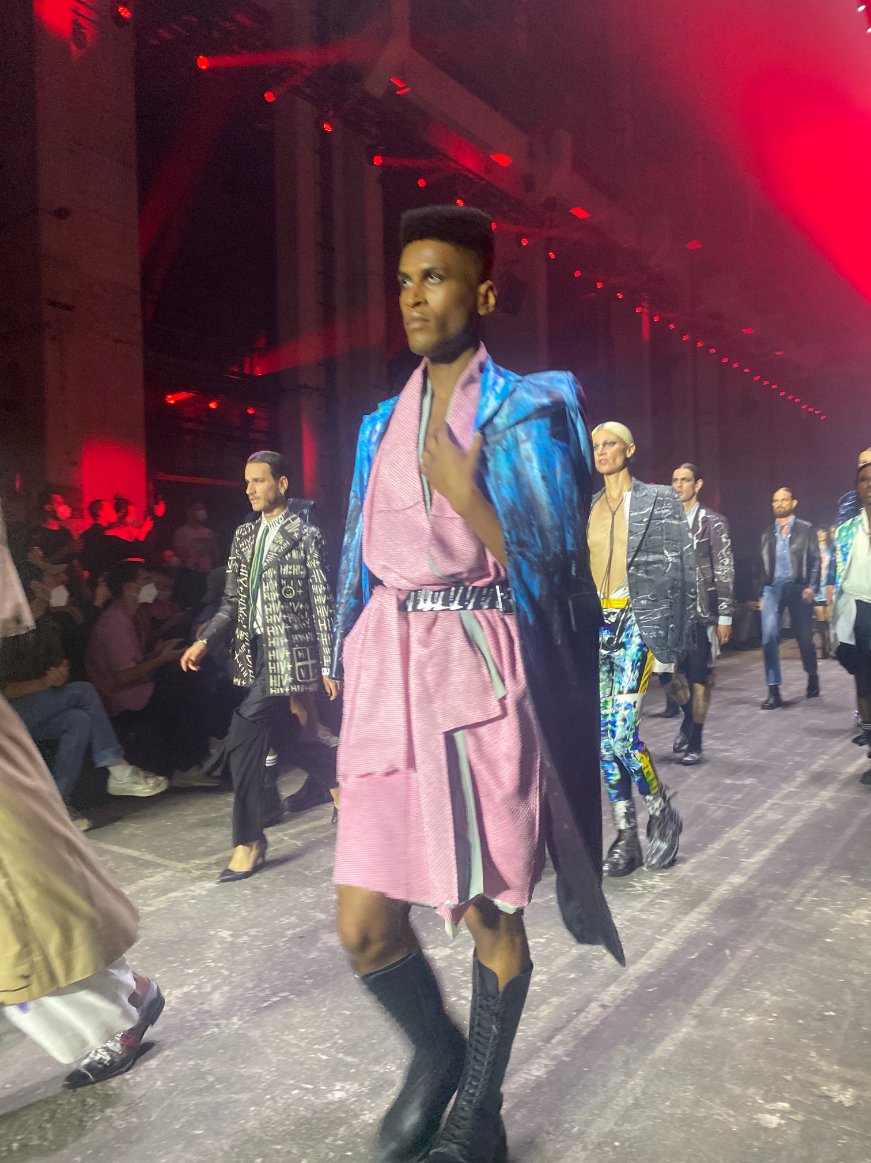In 2017, Beckmans College of Design graduates Josephine Bergqvist and Livia Schück realized that they shared the same interest in sustainable fashion and thus was born their Stockholm-based label, Rave Review. After qualifying as a semifinalist for the LVMH Prize at Paris Fashion Week, receiving the Rising Star Prize by the Swedish Ministry of Foreign Affairs, the Stockholm Prize by Nöjesguiden, the Bernadotte Art Award, and participating in the Gucci Film Festival, the label has established itself as a tour de force among a new crop of designers perfecting the art of transforming home textiles into desirable garments. Autre spoke with the vanguard design duo about their innovative design process, the role of digital fashion, and promoting sustainability on the blockchain.
AUTRE: What’s your personal favorite type of underwear?
LIVIA: I’ve been wearing tangs since I was thirteen years old. That’s what’s comfortable for me.
JOSEPHINE: Tangs and pushup bras were the thing until I was around seventeen, then all of my friends and I changed to soft bras and hipster panties. I’m not sure why it happened. Nowadays I wear all types.
AUTRE: How can brands and customers benefit from the digital fashion movement and how can digital fashion liberate itself from anthropomorphism?
RAVE REVIEW: We believe fashion is about more than just physical garments worn by humans. It’s not limited to just clothes. It’s about creating worlds where people want to belong. We live in an age when the digital and physical worlds are merged. We see so many possibilities with combining tech and fashion that goes well beyond creating NTFs. There’s many digital layers to fashion.
Livia Schück (left), Josephine Bergqvist (right). Photograph courtesy of Rave Review.
AUTRE: Why do you use CGIs as NFTs instead of trading physical garments as NFTs via ETH(etherium)?
RAVE REVIEW: We liked the concept of creating CGIs from something physical. The panties were first made in our studio from upcycled materials. From there, the materials were scanned and the whole panty generated. One of the ideas with the NFT drop is for us to enter the digital space, and hopefully in the future we can use the panties for something else, on avatars, in games, or whatever this bespoke “metaverse” will bring. We would never consider releasing anything on ETH for environmental reasons.
AUTRE: Since cryptocurrency is responsible for huge amounts of emissions, what alternatives are you approaching to offset the carbon footprint?
RAVE REVIEW: We have been curious about creating NFTs for a while, but have been waiting for a more sustainable and resource-efficient way of doing it. Our NFT is on the Solana blockchain. A Solana transaction takes the same amount of energy as two Google searches. The main reason for us to enter the digital world is the possibility of making even more sustainable fashion — to combine working with vintage/deadstock fabrics and digital garments. Producing digital garments requires less dead energy and transportation than physical garments. A lot of people these days are only dressing up for Instagram. Why not use a digital garment, then?
AUTRE: What are you most excited about life right now?
RAVE REVIEW: This NFT project, of course! No, that’s just one of many very exciting things happening. Josephine will get married this summer. We will very soon release a new collection and website that we’re very proud of.
AUTRE: Three key words about your upcoming collection?
RAVE REVIEW: Rave, punk, fun.












